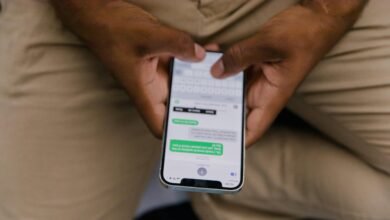Stimulus Check Still Missing? Find Out Now What Unbelievable Action You Must Take!

What to Do If You Didn’t Receive Your $1,400 Stimulus Payment on the Agreed Date
The economic fallout from the pandemic has prompted unprecedented financial measures from the government, including direct stimulus payments to support the American populace. The third round of stimulus payments, amounting to $1,400 per individual, was introduced under the American Rescue Plan in March 2021. If you were expecting your payment and it hasn’t arrived by the agreed date, don’t fret. This blog will guide you on the next steps to take, what to keep in mind, and how to navigate any possible issues.
Understanding the $1,400 Stimulus Payment
The $1,400 stimulus payment is a part of a broader package aimed to provide financial relief during challenging economic times. It was designed to offer immediate assistance to individuals and families impacted by the COVID-19 pandemic. Payments were issued to eligible individuals and dependents, which significantly extended the safety net for many households.
Eligibility for the payment typically depends on your adjusted gross income (AGI), along with your filing status. Individuals who earn up to $75,000, heads of household earning up to $112,500, and married couples filing jointly making up to $150,000 will likely qualify for the full amount. Individuals earning more than those thresholds may still receive partial payments, with eligibility phasing out entirely at higher incomes.
Check Your Payment Status
If your $1,400 payment has not arrived yet, your first step should be to check the status of your payment. The IRS has provided a handy online tool called the ‘Get My Payment’ portal, which enables taxpayers to track their stimulus payments. This tool can give you valuable information, such as whether your payment has been issued and if it was sent via direct deposit or mail.
To access the Get My Payment tool:
1. Visit the IRS website and navigate to the ‘Get My Payment’ page.
2. Enter your personal information, including your Social Security number, date of birth, and mailing address.
3. Review your payment status and the method of payment.
If the tool indicates that your payment has been sent but you have still not received it, you may want to consider other steps.
Potential Issues You Might Face
There could be a variety of reasons why you have yet to receive your stimulus payment. Below are some common issues:
1. **Direct Deposit Issues**: If the IRS does not have your updated bank information, your payment will be mailed as a physical check. This could be delayed, particularly if the U.S. Postal Service is experiencing backlogs.
2. **Address Changes**: If you have moved recently and didn’t update your address with the IRS, your check may have been sent to your previous residence.
3. **Tax Filing Status**: If you filed your taxes using the wrong status or had complications with your return, it may have affected your eligibility. For instance, if you qualified based on your 2019 income but had a change in 2020, it could impact your stimulus check.
4. **Dependent Issues**: If your dependent status has changed, you may find that your eligibility has shifted as well. Children can influence stimulus amounts, meaning that their status needs to be accurate for the calculation.
Steps to Take If You Still Haven’t Received Your Payment
If you have checked the status and believe something might have gone awry, here are steps you can take:
1. **File a Payment Request with the IRS**: If you find your payment was sent but you didn’t receive it, you can file a payment trace with the IRS. This can be done by submitting IRS Form 3911, which allows you to claim that your payment did not arrive.
2. **Contact the IRS**: If filing a payment trace feels overwhelming or you have additional questions, don’t hesitate to contact the IRS directly. While expect delays during peak seasons, they can provide valuable insights into your situation.
3. **Update Your Information**: If your bank details have changed or your address needs to be corrected, be sure to update this information with the IRS. You can do this when filing your tax return or by contacting them directly.
4. **Consider Filing a Tax Return**: If you were not required to file a tax return and thus didn’t receive the payment, it may be worth considering filing to claim your stimulus check. This should be done promptly, as there are deadlines for claiming the payment.
Document Everything
Throughout this process, it is crucial to keep meticulous records. Document interactions with the IRS and any forms that you file. This will not only assist you in tracking your status but also serve as a safeguard in case you need to contest any discrepancies later on.
Future Payments and Alternatives
If you’re struggling to get your $1,400 payment, consider researching other forms of financial assistance that may be available to you. Various local and national organizations continue to provide resources and aid to those in need. Furthermore, check if you are eligible for any state-level stimulus payments, which some states have designed to provide additional relief.
Understanding the landscape of financial assistance can broaden your options and lead you to other essential resources during these difficult times.
Be Patient
Lastly, remain patient. The IRS has been handling an unprecedented workload during the pandemic, leading to delays and backlogs. If you’ve taken all the necessary steps and submitted all required forms, it may take some time for processing.
Keep checking back on your payment status and follow up if you don’t notice any changes. Support is available, and you are not navigating this alone.
Conclusion
Not receiving your $1,400 stimulus payment can be frustrating, especially when you’re depending on that support. By understanding the eligibility criteria, using the available resources to check your payment status, addressing potential issues promptly, and knowing your next steps, you can effectively navigate this situation.
Always remember to stay updated on any changes in federal or state policies, as financial aid continues to adapt in response to the evolving economic landscape. Above all, ensure you keep your information accurate with the IRS and remain in communication should you encounter problems.
Finally, if you find yourself in a situation where you have not received your payment, don’t hesitate to seek further assistance. Many resources are available to help you get through this challenging time.
Summary
- The $1,400 stimulus payment aims to support Americans during the pandemic.
- Eligibility depends on adjusted gross income and tax filing status.
- Check your payment status using the IRS ‘Get My Payment’ tool.
- Common issues may include direct deposit errors or address changes.
- File a payment trace with the IRS if your payment is missing.
- Keep thorough records of all communications and forms filed.
- Explore alternative financial assistance if needed.
- Be patient as processing delays may occur due to high volumes at the IRS.





